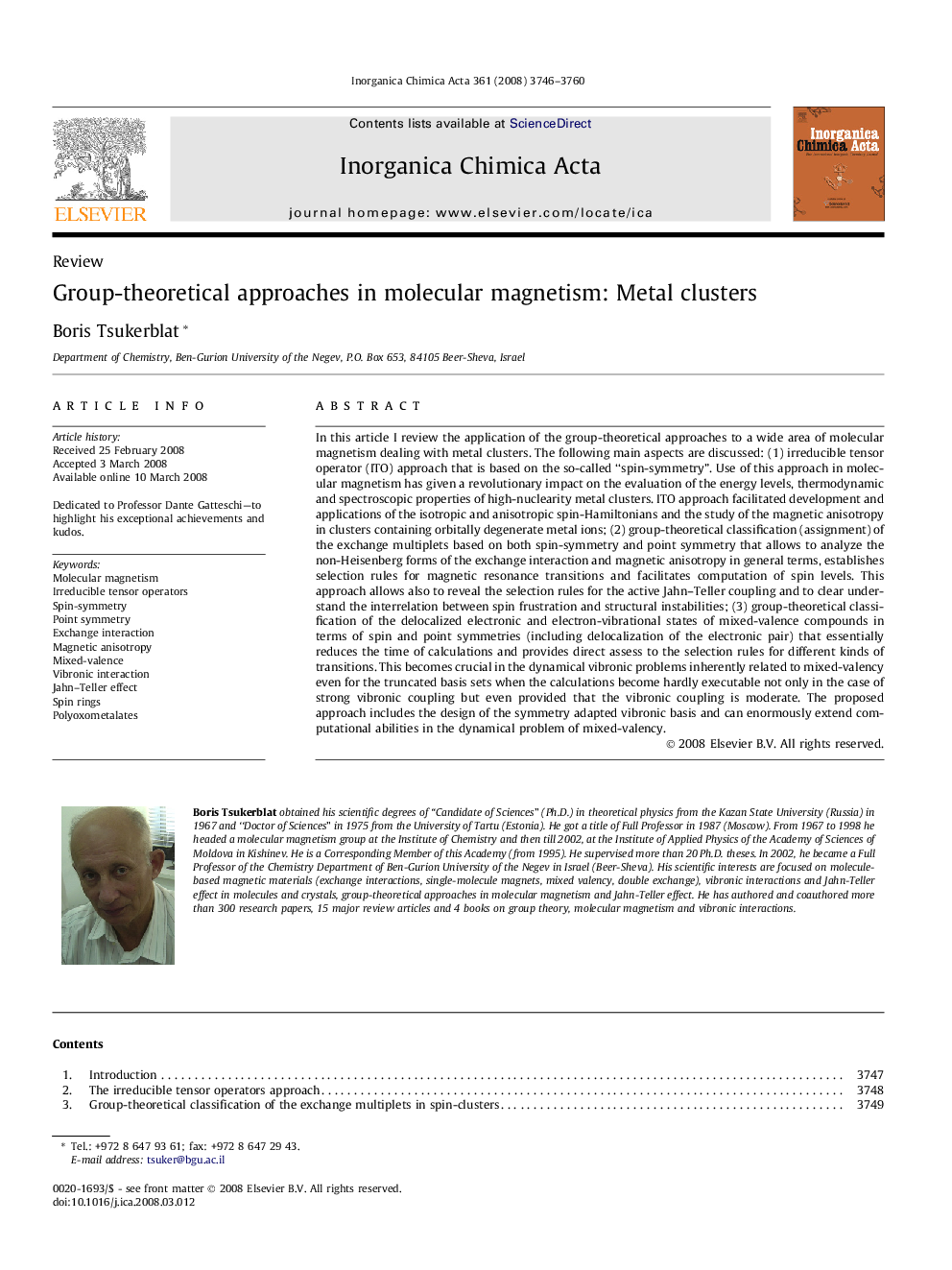| کد مقاله | کد نشریه | سال انتشار | مقاله انگلیسی | نسخه تمام متن |
|---|---|---|---|---|
| 1311441 | 1499209 | 2008 | 15 صفحه PDF | دانلود رایگان |

In this article I review the application of the group-theoretical approaches to a wide area of molecular magnetism dealing with metal clusters. The following main aspects are discussed: (1) irreducible tensor operator (ITO) approach that is based on the so-called “spin-symmetry”. Use of this approach in molecular magnetism has given a revolutionary impact on the evaluation of the energy levels, thermodynamic and spectroscopic properties of high-nuclearity metal clusters. ITO approach facilitated development and applications of the isotropic and anisotropic spin-Hamiltonians and the study of the magnetic anisotropy in clusters containing orbitally degenerate metal ions; (2) group-theoretical classification (assignment) of the exchange multiplets based on both spin-symmetry and point symmetry that allows to analyze the non-Heisenberg forms of the exchange interaction and magnetic anisotropy in general terms, establishes selection rules for magnetic resonance transitions and facilitates computation of spin levels. This approach allows also to reveal the selection rules for the active Jahn–Teller coupling and to clear understand the interrelation between spin frustration and structural instabilities; (3) group-theoretical classification of the delocalized electronic and electron-vibrational states of mixed-valence compounds in terms of spin and point symmetries (including delocalization of the electronic pair) that essentially reduces the time of calculations and provides direct assess to the selection rules for different kinds of transitions. This becomes crucial in the dynamical vibronic problems inherently related to mixed-valency even for the truncated basis sets when the calculations become hardly executable not only in the case of strong vibronic coupling but even provided that the vibronic coupling is moderate. The proposed approach includes the design of the symmetry adapted vibronic basis and can enormously extend computational abilities in the dynamical problem of mixed-valency.
In this article the applications of the group-theoretical approaches to a wide area of molecular magnetism dealing with metal clusters are reviewed.Figure optionsDownload as PowerPoint slide
Journal: Inorganica Chimica Acta - Volume 361, Issues 14–15, 1 October 2008, Pages 3746–3760